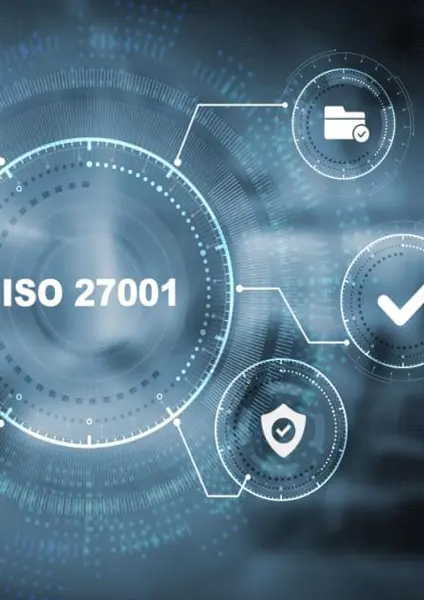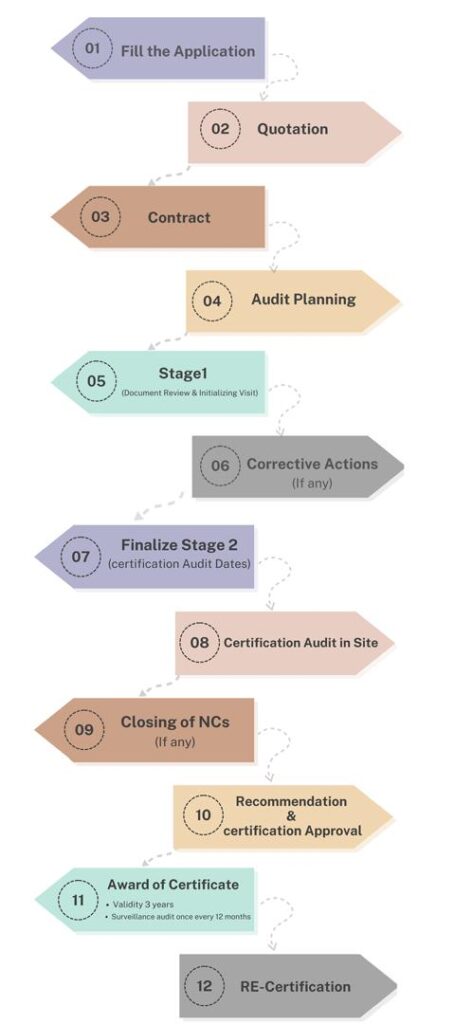In today’s digital age, safeguarding sensitive information is critical for every organization. ISO 27001:2022, the latest update to the globally recognized standard for Information Security Management Systems (ISMS), offers a comprehensive framework for managing and protecting data. By implementing this standard, organizations can mitigate risks, ensure compliance, and foster trust among stakeholders.
This article explores the fundamentals of ISO 27001:2022, its benefits, implementation steps, and practical tips to help organizations achieve certification and strengthen their information security posture.
What Is ISO 27001:2022?
ISO 27001:2022 is an international standard that provides requirements for establishing, implementing, maintaining, and continually improving an ISMS. It is designed to help organizations protect sensitive information, whether it’s digital, paper-based, or in other forms, by addressing:
- Confidentiality – Ensuring information is accessible only to authorized personnel.
- Integrity – Ensuring information accuracy and completeness.
- Availability – Ensuring information is available when needed.
This 2022 revision introduces updates to reflect the evolving cybersecurity landscape, aligning with modern threats, technologies, and best practices.

Why Is ISO 27001:2022 Important?
Information breaches can lead to severe financial, reputational, and legal consequences. ISO 27001:2022 provides a structured approach to identify risks, implement controls, and safeguard assets.
Key Benefits of ISO 27001:2022
- Enhanced Information Security The standard helps protect sensitive data, reducing risks of breaches and cyberattacks.
- Regulatory Compliance ISO 27001:2022 aligns with legal and regulatory requirements, including GDPR, CCPA, and industry-specific standards.
- Increased Customer Trust Certification demonstrates a commitment to data security, boosting confidence among clients and partners.
- Risk Management A systematic approach to identifying and mitigating risks ensures business continuity.
- Competitive Advantage Certification differentiates your organization in the market, attracting clients who prioritize security.
Key Changes in ISO 27001:2022
The 2022 revision introduces updates to address emerging cybersecurity challenges. Key changes include:
- Revised Control Categories The controls have been consolidated into four categories:
- Organizational Controls
- People Controls
- Physical Controls
- Technological Controls
- Addition of New Controls New controls address areas like threat intelligence, cloud security, data leakage prevention, and monitoring activities.
- Streamlined Documentation Documentation requirements have been simplified to align with modern business practices.
- Integration with Other Standards Enhanced alignment with other ISO standards like ISO 9001 (Quality Management) and ISO 14001 (Environmental Management).
Steps to Implement ISO 27001:2022
- Understand the Standard
Familiarize yourself with the requirements of ISO 27001:2022. Consider training programs or consulting an expert to ensure clarity.
- Conduct a Gap Analysis
Assess your current information security practices to identify gaps between existing processes and ISO 27001:2022 requirements.
- Define the Scope
Determine the scope of your ISMS by identifying which parts of the organization and types of information will be covered.
- Perform a Risk Assessment
Identify potential threats, vulnerabilities, and risks to your information assets. Prioritize risks based on their impact and likelihood.
- Develop a Risk Treatment Plan
Establish a plan to address identified risks using the controls specified in ISO 27001:2022.
- Implement ISMS Policies and Controls
Document and implement policies, procedures, and controls to mitigate risks and meet the standard’s requirements.
- Train Employees
Ensure employees understand their roles in maintaining information security and adhering to ISMS policies.
- Monitor and Measure
Regularly monitor the performance of your ISMS using key performance indicators (KPIs) and conduct internal audits.
- Conduct a Certification Audit
Engage an accredited certification body to evaluate your ISMS and issue ISO 27001:2022 certification upon compliance.
Examples of ISO 27001:2022 in Action
Case Study: Financial Services
A financial institution implemented ISO 27001:2022 to protect customer data and comply with stringent regulatory requirements. By integrating new controls like threat intelligence and cloud security, they reduced data breach incidents by 40% and achieved certification within 12 months.
Case Study: E-Commerce
An e-commerce company adopted ISO 27001:2022 to enhance customer trust. Upgrading their monitoring systems and implementing a robust incident response plan helped them prevent unauthorized access to sensitive payment information, resulting in a 25% increase in customer satisfaction.
Practical Tips for ISO 27001:2022 Implementation
- Engage Leadership Leadership support is critical for successful implementation. Secure buy-in by emphasizing the benefits of certification.
- Automate Processes Use security management tools to automate risk assessments, incident response, and compliance reporting.
- Conduct Regular Training Regularly educate employees on emerging threats, phishing awareness, and secure data handling practices.
- Focus on Continuous Improvement Regularly review and update your ISMS to adapt to new risks and technologies.
- Collaborate with Stakeholders Work closely with IT teams, legal advisors, and third-party vendors to ensure comprehensive security coverage.
Challenges in Implementing ISO 27001:2022
- Resource Constraints
Small organizations may struggle with limited budgets or personnel. Address this by prioritizing high-risk areas and scaling efforts over time.
- Resistance to Change
Employees may resist new policies or controls. Involve them early in the process and emphasize how these changes benefit the organization.
- Keeping Up with Threats
The cybersecurity landscape evolves rapidly. Regularly update your risk assessments and controls to stay ahead of emerging threats.
Conclusion
ISO 27001:2022 is an essential standard for organizations aiming to protect sensitive information, ensure regulatory compliance, and build trust in a digital-first world. By adopting its framework, businesses can safeguard their data, improve risk management, and demonstrate a commitment to information security.
Whether you’re implementing an ISMS for the first time or transitioning from an earlier version of the standard, ISO 27001:2022 offers the tools to navigate today’s complex cybersecurity challenges confidently. Start your journey today and position your organization as a leader in information security.
Certification Process
1- Completion of information related to the company name, company activities, the number of staff per work shift, website address, and branches.
2- Announcement of costs related to the requested certification issuance process.
3- Preparation and approval of the contract for implementation.
4- Planning the audit process and notifying the client for audit process.
5- reviewing documents to identify the client strengths and weaknesses in comparison to the established documentation.
6- Corrective actions for potential weaknesses.
7- Final planning for conducting the audit, registration, and certification issuance.
8- Conducting the on-site audit process at the client by the specialized team of the certifying company.
9- Corrective actions for potential weaknesses in the execution of the organization’s processes.
10- Recommendation for the issuance of a certification related to the client to the head office.
11- Achieving the related certification.
12- Renew after three years.


